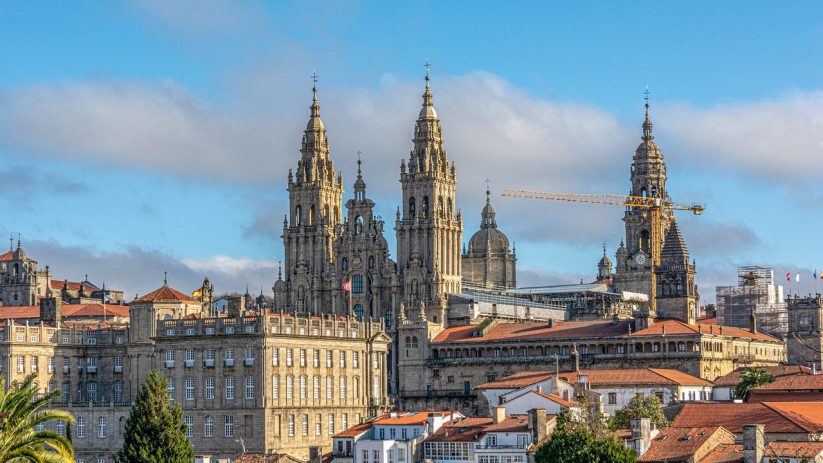UNESCO Highlights on the Camino de Santiago
The Camino de Santiago is rich with remarkable landmarks, from ancient cathedrals and monasteries to Roman walls and beautifully preserved old towns. In this article, we explore some of the most iconic UNESCO World Heritage sites along the Camino, including cities, religious sites, and architectural treasures.
UNESCO sites draw visitors from around the world for their outstanding cultural, historical, or scientific value. With over 1,000 World Heritage Sites globally, these locations are protected for their preservation, yet remain open for travellers to experience. Join us as we highlight the UNESCO-listed gems you’ll encounter on the Camino de Santiago.
Table of contents
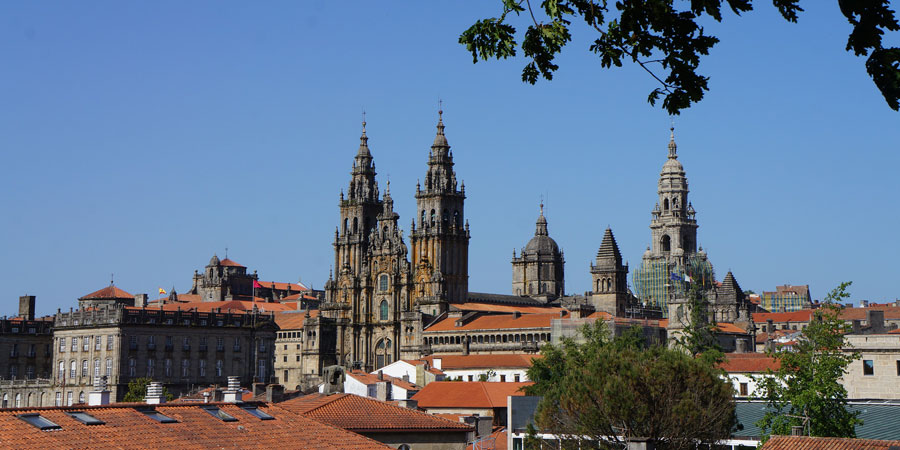
Santiago de Compostela
The entire historic centre of Santiago de Compostela is recognised as a UNESCO World Heritage Site. This vibrant city offers so much to explore — from its stunning cathedral and lively food market to simply strolling through the charming cobbled streets and soaking up the atmosphere.
If you’re spending just 24 hours in Santiago, be sure to wander the narrow lanes of the old town, visit the magnificent Cathedral of Santiago, and, if you can, climb the towers for a breathtaking view. Don’t miss the chance to see the famous Two Marías and enjoy some delicious local food and drink at Santiago’s bustling food market.
In need of more inspiration, here are some of our articles about this wonderful city:
- Experiencing the magic of Santiago de Compostela
- Things to Do in Santiago de Compostela Beyond the Camino
- 24 Hours in Santiago de Compostela: A Local Guide
- Insider’s Guide to Santiago de Compostela
- Cathedral of Santiago de Compostela: Key Things to Know
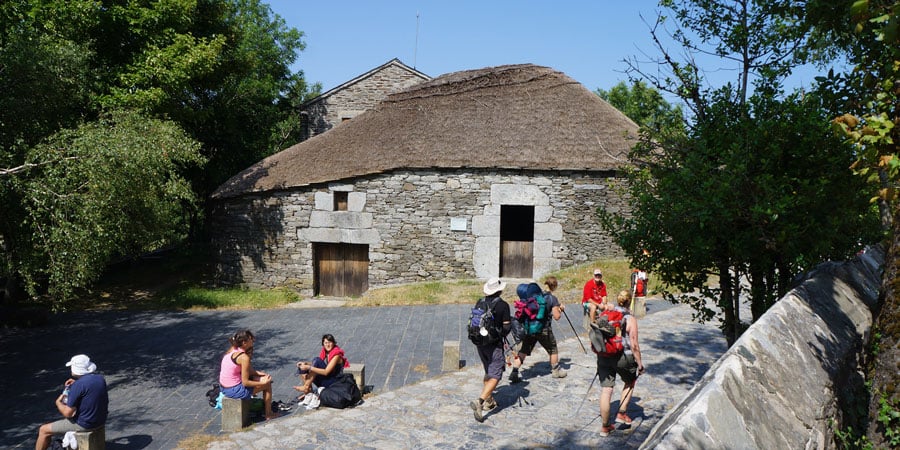
Camino Frances
The Camino Francés is the most popular of the Camino de Santiago routes. Along this stretch of the trail, you will discover many interesting attractions. The route begins in Saint-Jean-Pied-de-Port and takes pilgrims all the way to Santiago de Compostela. If you have read any books about the Camino or seen any movies about the Camino, odds are that they’ve taken place on the Camino Frances.
Pyrénées
The first section of the Camino Francés starts in Saint-Jean-Pied-de-Port at the foot of the magnificent Pyrenes. The mountain range has UNESCO status and if you want to be awestruck by this natural wonder, you’re going to want to start your Camino in Saint-Jean. Founded in the 12th century, this is a beautiful town and a meeting point for the end of the Chemin du Puy and the start of the Camino Francés. Over 30,000 pilgrims start their Camino journey on the cobbled streets of Saint-Jean every year.
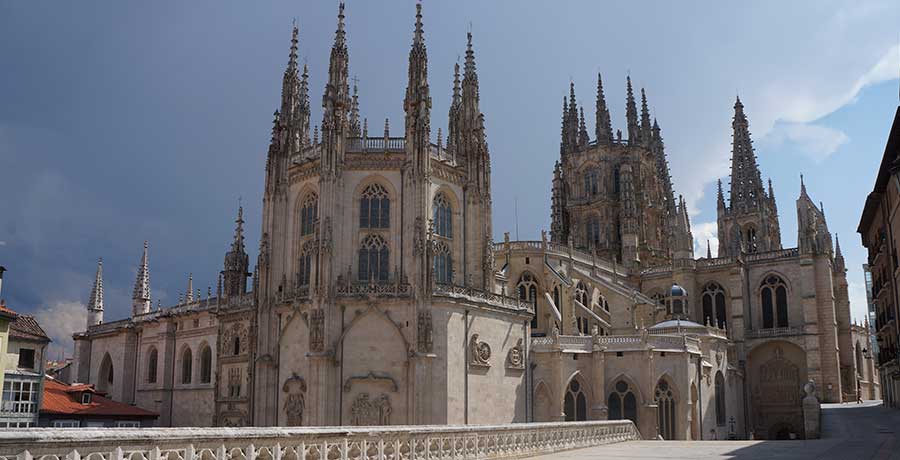
Burgos Cathedral
Burgos is a charming city on the Camino Francés, which you will encounter if you are walking the full French Way or the section from Logrono to Burgos. There is a lot to see in the city, but it’s most famous for its splendid cathedral, which has been a UNESCO site since 1984. Burgos Cathedral is one of the best examples of Gothic architecture in Europe. Its construction began in 1221 (it was the first Gothic cathedral to be built in Spain) and the interior boasts an impressive collection of art, paintings, tombs and stained-glass windows.
After you’ve visited the cathedral, make sure to spend some time exploring the city’s other attractions, especially Las Huelgas Reales Monastery and the Cartuja of Miraflores. Burgos is also famous for its cheese (Queso de Burgos) and meat (Morcilla de Burgos).
San Millán Yuso and Suso Monasteries
The monasteries of San Millán de la Cogolla have been UNESCO sites since 1997 and they are located in La Rioja. It was here in this monastic community, that the very first literature was produced in Castillian and it’s considered the birthplace of the Spanish language. You can take the opportunity to visit these monasteries if you are walking the Camino Francés from Logrono to Burgos. They are located a short drive from your route stops of Najera or Santo Domingo de la Calzada.
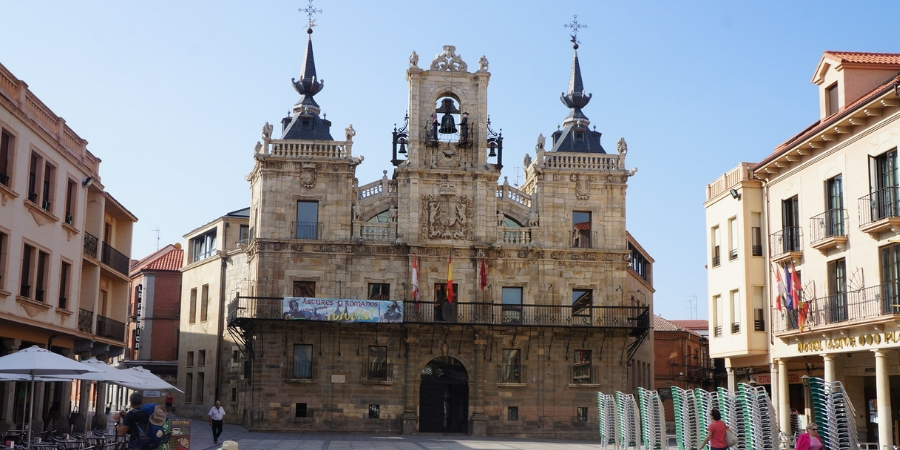
León Cathedral
The majestic cathedral in León was built between 1747 and the early 19th century. With an abundance of natural light, this beautiful cathedral is home to important works of art and the rich ornamentation of the vault of the Sanctuary is particularly wondrous. A visit to the cathedral is a must if you are walking the full Camino Francés and spending some time in León along the way.
Other attractions of note on the Camino Francés
While the UNESCO sites have their appeal, there are other attractions of note on the French Way. If you are passing through any of the following towns or cities, we would recommend especially visiting Pamplona. You also would do well to sample a glass or two of the famous wine from La Rioja wine region.
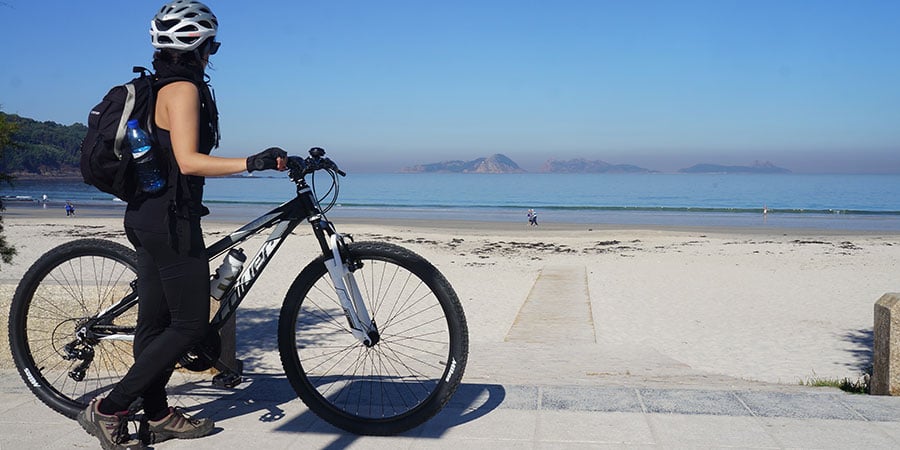
Camino Portugués
The Camino Portugués is a wonderful coastal alternative to the Camino Francés and takes pilgrims from Lisbon and Porto in Portugal all the way to Santiago in Galicia, Spain. Pilgrims pass beautiful towns, villages and scenic countryside and coastal views. Some key locations include Santarém, Coimbra, Porto City (Home of Port wine), Viana do Castelo, Vigo and Pontevedra.
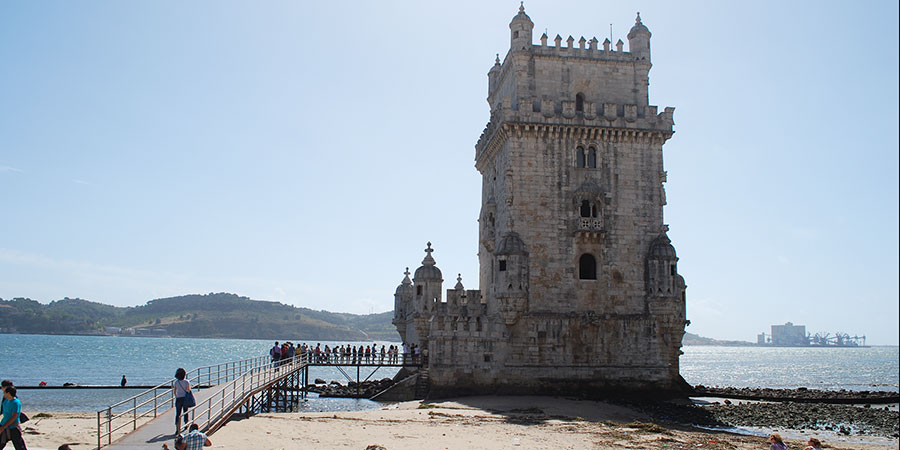
Belem Monastery, Lisbon
If you are starting your Camino in Lisbon, make sure to spend a day or two in the city, exploring everything this vibrant and hilly wonder has to offer. A UNESCO site of note in Lisbon is the Belem Monastery. If you visit this site, make sure to also sample one of the famed Pastes de nata, also known as Belem pastries.
Convent du Christ á Tomar
If you walk from Lisbon, the first section of the Camino Portugués, you will pass Tomar, home to the majestic Convent du Christ á Tomar. The convent was built over five centuries so it contains elements and influences from many different architectural periods – Romanesque, Gothic, Renaissance, Baroque and more.
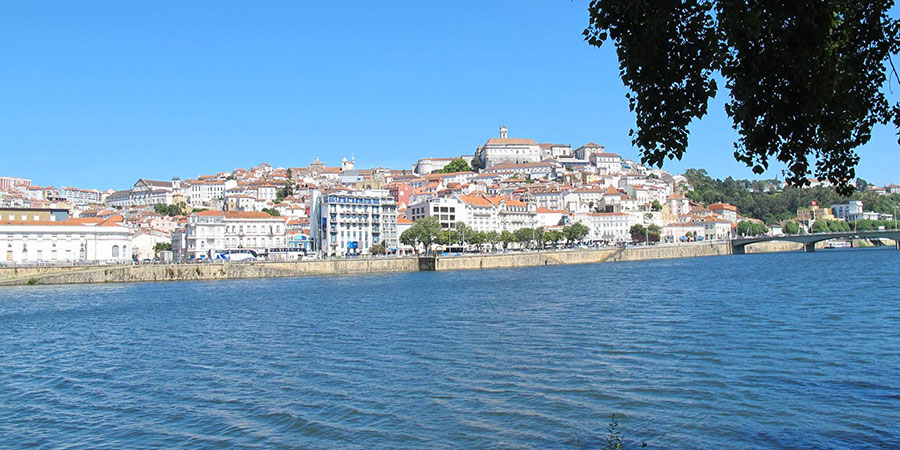
Université de Coimbra – Alta et Sofia
Coimbra is a charming pocket-sized city, perched on the hill overlooking the River Mondego. The city is home to one of the oldest operating universities in the world. Since Coimbra’s University buildings are spread around the old town (Cidade Alta), the whole city has been listed as a UNESCO World Heritage Site. It is worth discovering more about the history of Coimbra and its attractions, especially if you are walking or cycling the full Camino Portugues route.
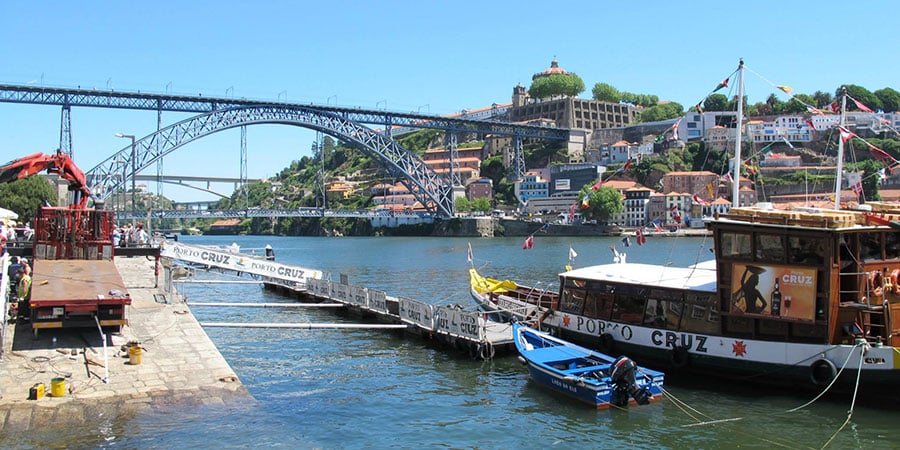
The Historic Centre of Porto
Porto is a truly vibrant city. With both sides of the Douro river stacked with buildings of all sizes and colours, Porto is a visual wonder. The perfect spot for a few days, if you’re starting your Camino from this gorgeous city, here are 10 unmissable things to do in Porto.
Other attractions of note on the Camino Portugués
Depending on where you are starting your Camino, you will have many different attractions to visit in the various cities and towns along the Portuguese Way. Lisbon as a whole is worth exploring and you could easily spend days taking the whole city in. A day trip from Lisbon to Sintra is well worth doing if you have the time.
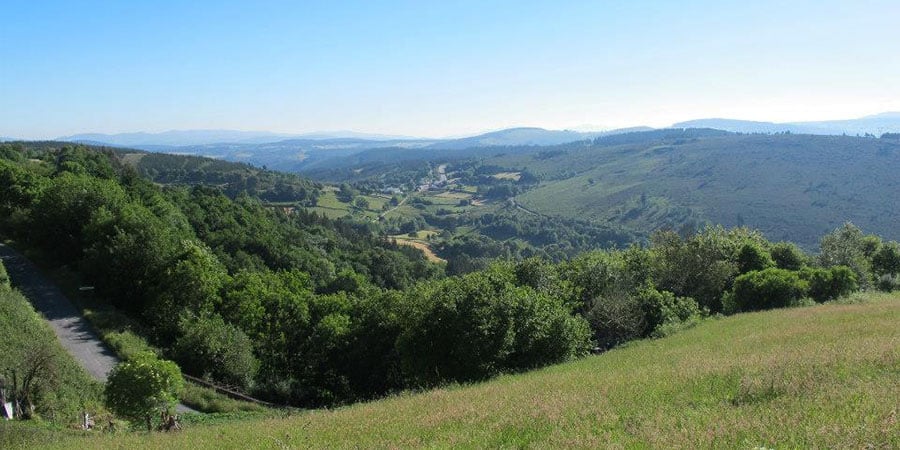
Camino Primitivo
The Camino Primitivo is also known as the Original Way and this route is the oldest of the Camino de Santiago routes. The first ever pilgrim on this route was King Alfonso II, who walked the Camino from Oviedo to Santiago in the 9th century in order to confirm that the remains in Santiago were in fact, those of the Apostle St. James. Given its rich history, it’s no surprise that the Camino Primitivo is home to many historic attractions and UNESCO sites.
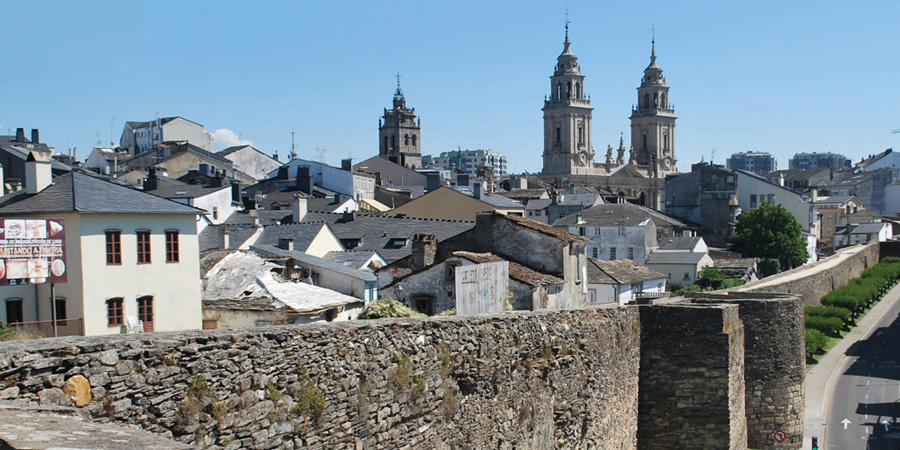
Lugo’s Roman Walls
Lugo’s most famous attraction is its spectacular Roman Wall. Perfectly preserved, this iconic symbol of the city dates back to the 3rd century and encircles the old town for more than 2km. The wall (Muralla Romana de Lugo) is 7 metres wide in places and boasts 85 towers and 10 gates, including the Porta Miñá (referring to the River Miño), which is actually the way out of the city for pilgrims walking the last 100km of the Camino Primitivo from Lugo to Santiago.
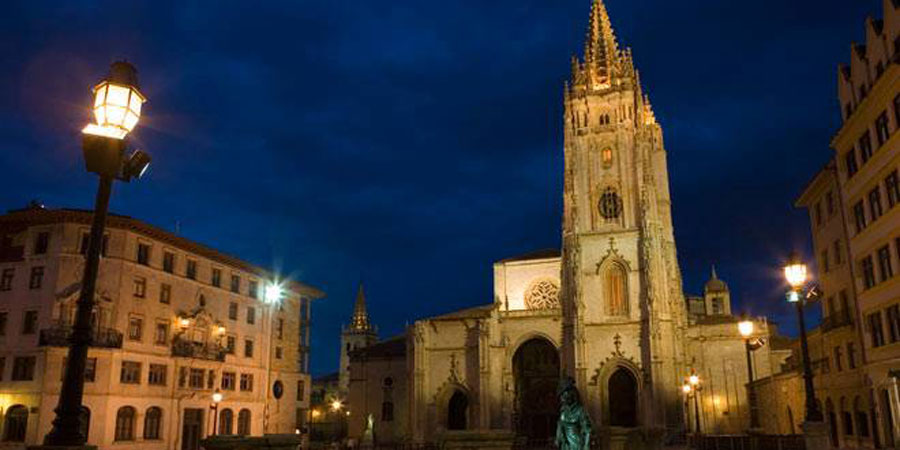
Monuments of Oviedo
The kingdom of Asturias kept the flame of Christianity alive in the 9th century and there was significant development of religious architecture during this period. The most impressive monuments of note include the churches of Santa Maria del Naranco, San Miguel de Lillo, Santa Cristina de Lena, the Camara Santa and San Julian de los Prados. They are all located in and around the ancient capital city of Oviedo and are well worth exploring if you are starting your Camino from Oviedo.
Other attractions of note on the Camino Primitivo
If you are in Oviedo, make sure to sample the local cider. Oviedo is actually known as the cider capital of Spain so you can’t miss your chance for a cool glass of the local brew. When in Lugo, the Roman walls are definitely an unmissable activity. It’s also worth paying a visit to the Cathedral of Lugo.
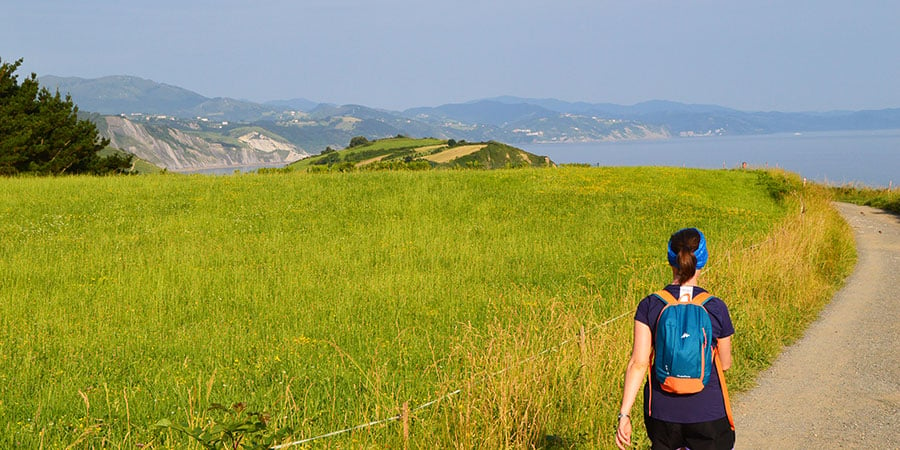
Camino del Norte
The Camino del Norte, also known as the Northern Way, is fast becoming one of the most popular routes of the Camino de Santiago, especially among those who have already completed sections of the Camino Francés and Camino Portugués. With its challenging trails and the allure of incredible food from the Basque country, the delights of Northern Way are well worth exploring.
Vizcaya Bridge, west of Bilbao
Just west of Bilbao stands Vizcaya Bridge. At 45 metres high with a span of 160 metres, this innovative 19th-century bridge has been adapted and modernised with the times. Vizcaya Bridge was actually the first bridge in the world to carry people and traffic on a high-suspended gondola and has since been used as the model for many bridges in Europe, Africa and America. You will see this bridge if you spend some time in Bilbao after walking from San Sebastián or before you walk from Bilbao to Santander on the Northern Way.
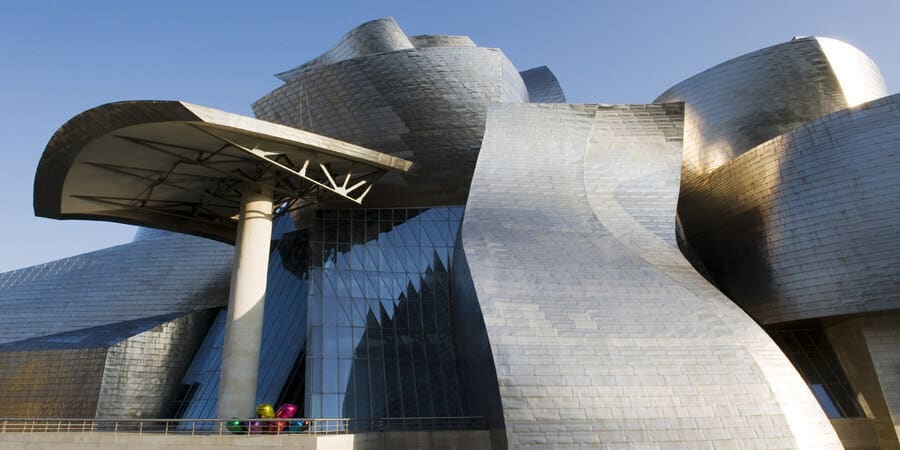
Other attractions of note on the Camino del Norte
While there aren’t many UNESCO attractions on the Camino del Norte, it is one of the best routes for culinary exploration and those seeking more modern attractions. For those walking via Bilbao, the impressive Guggenheim Museum is an absolute must-see and those visiting San Sebastián would be well-advised to dine out to their heart’s content. The route also boasts incredible sea views and beaches that would tempt even the wariest of beach-goers.
Camino Inglés
The Camino Inglés is the route traditionally taken by pilgrims from Ireland, the UK and Northern Europe. This is a shorter Camino route that has two starting points – A Coruna and Ferrol. While there may only be one UNESCO site on the Camino Ingles, it’s a good one!
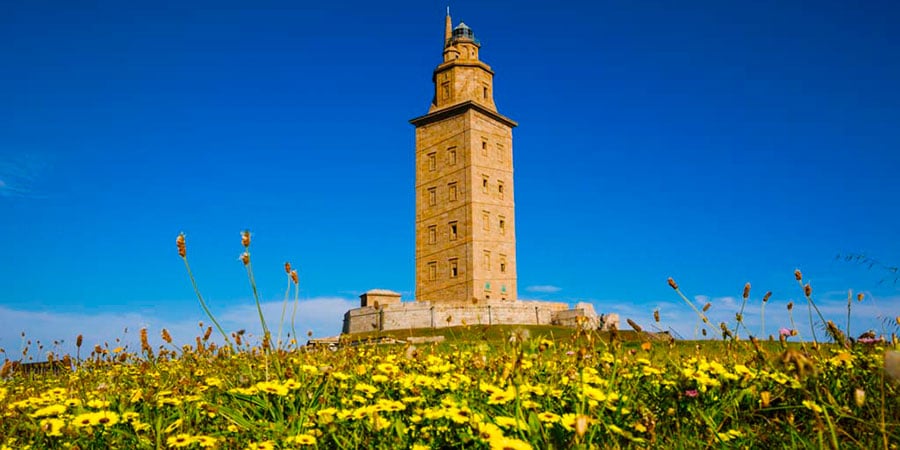
Tower of Hercules
The Tower of Hercules is the main attraction of the Camino Inglés. Located at the route’s starting point of A Coruna, the tower is a landmark that has guarded the entrance to A Coruna’s harbour since the 1st century. Wonderfully preserved, the tower was built by the Romans on a 57-metre-high rock. The tower itself is 55 metres high and divided into three levels. It’s a magnificent piece of history and an instantly recognisable symbol of the Camino Ingles.
Please do note that if you are hoping to receive your Compostela while walking the 75km Camino Inglés from A Coruna, you will either have to complete a section of this route in Ireland or the UK or start your Camino from the other starting point at Ferrol as you can only receive the Compostela if you walk at least the last 100km of a Camino route.
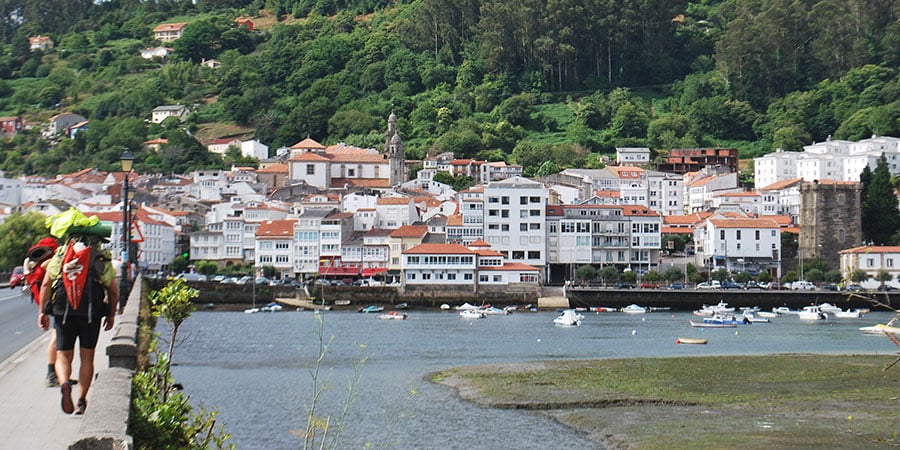
Other attractions of note on the Camino Ingles
Ferrol is the second starting point for the Camino Ingles and is well worth a visit, especially if you are walking your Camino near Easter. This port city plays host to one of Spain’s most impressive Easter celebrations.
Via Francigena
The Via Francigena in Italy is also known as the Camino to Rome and is a great option for those hoping to experience historic Italian towns and cities. Italy actually has the most UNESCO World Heritage Sites of any country in the world, with 58 sites awarded UNESCO status. This is due, unsurprisingly, to the rich history and culture of the country.
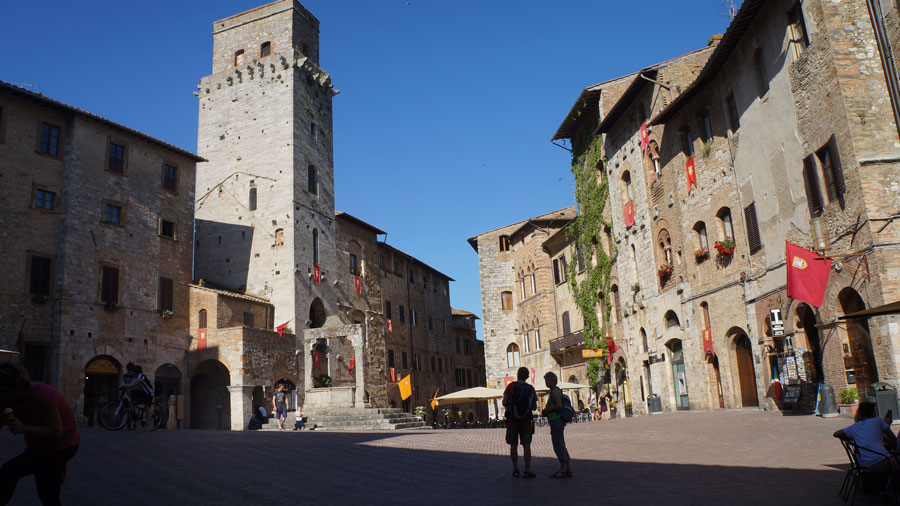
The Historic Centre of San Gimignano
With towers built by local feuding families in the Middle Ages and a certain Romeo & Juliet aura about the place, San Gimignano, is one of the most beautiful places along the Via Francigena. Perched on a pretty Tuscan hilltop, the famed towers are one of the most magnificent and unusual views pilgrims will encounter as they make their way along the Via Francigena trail.
The Historic Centre of Siena
Siena is a wonderful city in the heart of Tuscany and the finishing point for those walking the Via Francigena in Tuscany. Siena is a UNESCO city, which was designed as a work of art to blend in with its Tuscan surroundings. The beauty of the city can be experienced by simply walking around the historic centre. From piazzas and monuments to buildings and dining options, the atmosphere of Siena is infectious. Siena is also known for its famous festival, the Palio di Siena, which takes place in July and August.
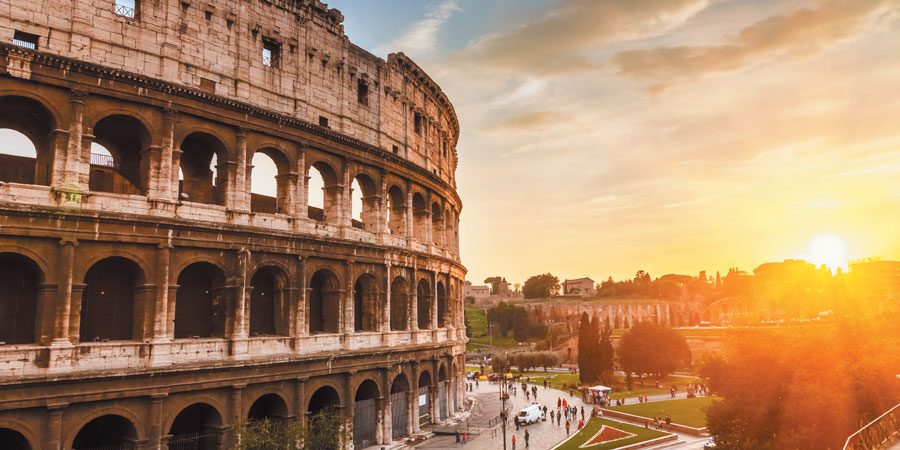
The Historic Centre of Rome
The eternal city, Rome is the finishing point for the Via Francigena in Italy and one of the world’s most beloved cities. Rich in history and culture, you could spend a week in Rome and only graze the surface of the things to do. Highlights include the Colosseum, the Pantheon, Castel San Angelo, Vatican City and much more. When it comes to UNESCO highlights on the Camino, Rome and Italy as a whole are the places to be.
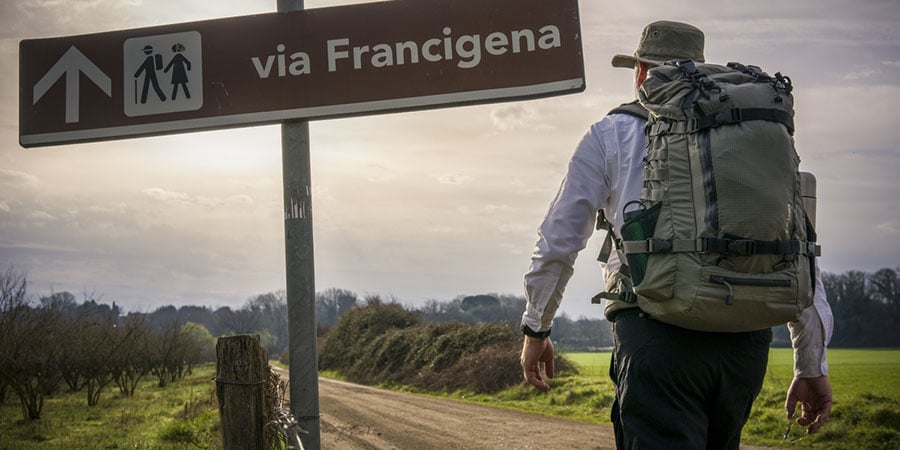
Other attractions of note on the Via Francigena
As you are walking the Via Francigena in Italy, you will get the chance to experience the scenery of the Val d’Orcia in Tuscany. This valley is a classic example of a Renaissance agricultural landscape, where functionality and aesthetics went hand in hand. Discover the Val d’Orcia.
Lucca is the starting point for the Via Frncigena in Italy and it’s definitely worth exploring. This walled city boasts magical medieval streets and lively squares. There is so much to see and all within walking distance of the city’s centre. Here are 5 must-see things to do in Lucca.
A huge draw for visitors to Italy is the food and wine. Wherever you are, whether it’s a huge city or a small town, odds are that your appetite will be more than satisfied by the delights of Italian food.
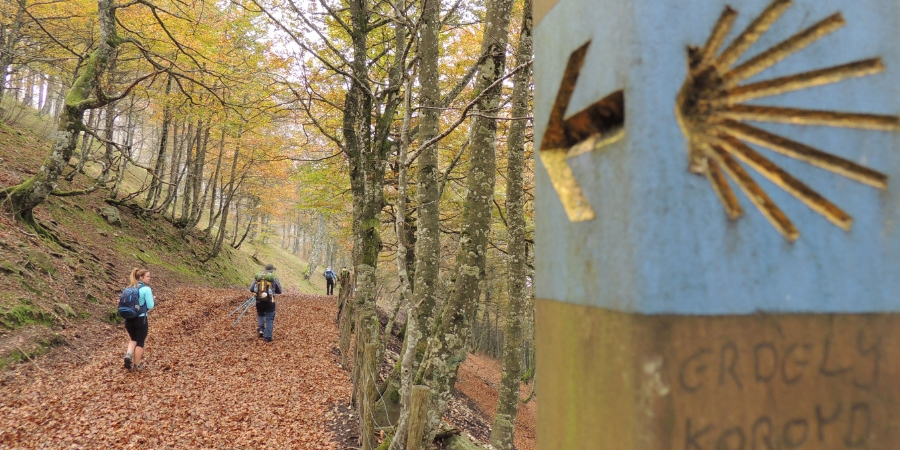
We hope you enjoyed this article about the best UNESCO highlights on the Camino de Santiago, also known as the Way of St James. If you would like to further explore the attractions on the Camino, make sure to visit our blog. For more information about the Camino, our various routes or if you need help booking your own Camino adventure, please don’t hesitate to contact us.
